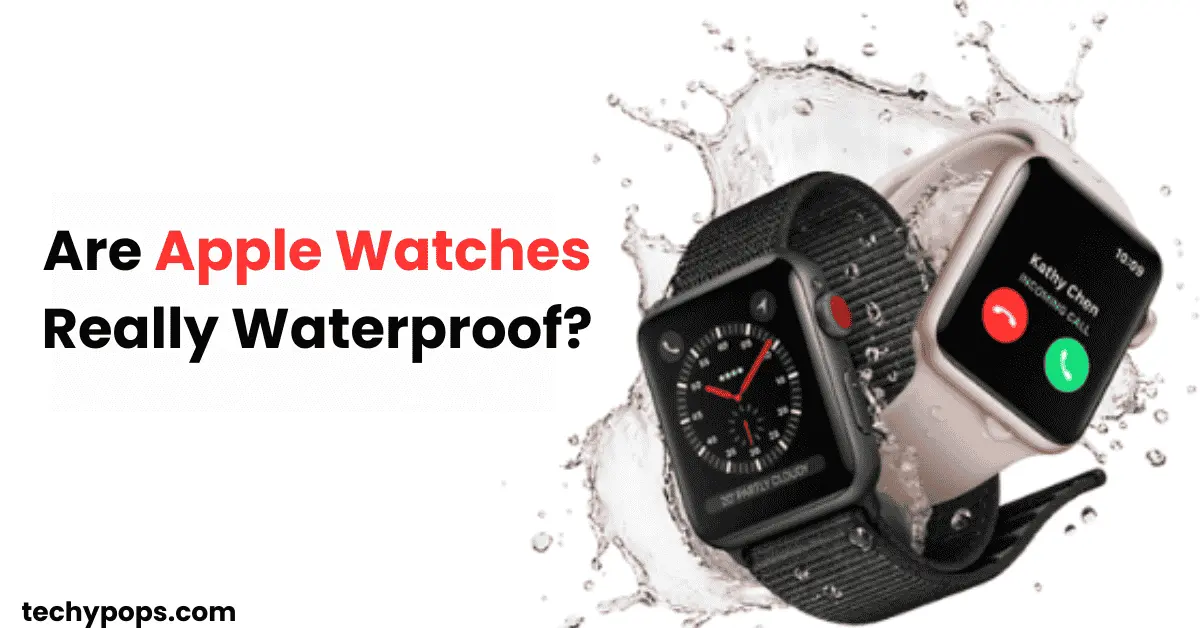Apple Watches are designed with various levels of water resistance, making them suitable for daily activities like handwashing and some water-based exercises. However, no Apple Watch model is entirely waterproof. Instead, they’re rated as water-resistant, with different generations offering varying degrees of protection. This article will explain Apple Watch water resistance levels, how to use the Water Lock feature, and tips for maintaining your watch’s water resistance.
Understanding Apple Watch Water Resistance: Is the Apple Watch Waterproof?
It’s essential to distinguish between waterproof and water-resistant. While waterproof implies full protection from water under all conditions, water-resistant indicates that the device can withstand water to a certain extent but is not immune to water damage. Apple Watches fall under the water-resistant category, allowing you to use them around water with some limitations.
Which Apple Watches Are Water-Resistant?

Apple Watches have evolved in their water resistance capabilities over the years. Here’s a breakdown of water resistance across different models:
- Apple Watch Series 1 and First-Generation Models: These models have minimal water resistance and are rated for splashes but not immersion in water. Activities like handwashing or light rain exposure are acceptable, but they are not designed for swimming.
- Apple Watch Series 2 and Later Models: Starting from Series 2, Apple introduced a higher level of water resistance, with a 50-meter water resistance rating under ISO standard 22810:2010. This makes Series 2 and later suitable for swimming in shallow water, such as pools or ocean swims.
- Apple Watch Ultra: The Apple Watch Ultra, Apple’s most rugged model, is designed with more advanced water resistance, allowing it to withstand underwater depths of up to 100 meters. This makes it ideal for scuba diving and other high-intensity water activities within this depth.
Are All Apple Watches Waterproof?
No, not all Apple Watches are waterproof. Each model has a specific water resistance rating, and only Series 2 and later are suitable for swimming and other water-based activities. Always check the water resistance rating of your specific Apple Watch model before using it around water.
Water Lock Feature: What Does Water Lock Mean on Apple Watch?

Apple introduced the Water Lock feature starting with Series 2. Here’s how it works and when to use it:
- Activating Water Lock: Water Lock is automatically enabled when you start a water-based workout, like swimming, or you can manually turn it on through the Control Center.
- Functionality of Water Lock: When enabled, Water Lock locks the screen to prevent accidental taps caused by water contact. After your activity, turning off Water Lock plays a sound that expels any water from the speaker.
- When to Use Water Lock: Use Water Lock whenever your Apple Watch is exposed to water to maintain functionality and prevent accidental interactions.
How to Check if Your Apple Watch is Waterproof or Water-Resistant

To determine the water resistance of your Apple Watch model, check your model details on Apple’s website or refer to your device’s documentation. Generally, Series 2 and later models are safe for swimming, while earlier models should avoid full water exposure.
Tips for Using Your Apple Watch Around Water
To ensure the longevity of your Apple Watch, follow these guidelines when using it in or around water:
- Avoid High-Speed Water Exposure: Activities like water skiing, diving beyond specified depths, or high-impact water sports may exceed the water resistance capacity.
- Rinse After Salt or Chlorine Exposure: After swimming in the ocean or a chlorinated pool, rinse your Apple Watch with fresh water to prevent salt or chlorine from affecting the seals and water resistance components.
- Avoid Exposure to Soap, Shampoo, and Perfume: While washing your hands or showering, avoid direct exposure to soap, shampoo, lotions, or perfumes. Chemicals can damage water seals over time.
- Use Water Lock Mode: Enable Water Lock mode before engaging in any water activity. This protects the screen and helps expel water from the speaker once you finish.
Caring for Your Apple Watch’s Water Resistance Over Time
Even though Apple Watches have impressive water resistance capabilities, water resistance can degrade over time due to normal wear and tear. Here are some best practices for maintaining water resistance:
- Avoid Extreme Temperatures: Exposing your Apple Watch to extremely high or low temperatures can weaken its water seals.
- Limit Soap and Chemical Exposure: Avoid wearing your Apple Watch in situations where it might be exposed to chemicals or solvents.
- Check for Visible Damage: Inspect your Apple Watch regularly for cracks or other damage that might compromise water resistance. If you see any, avoid water exposure and contact Apple Support for advice.
FAQs About Apple Watch Water Resistance
Final Thoughts
Apple Watches are not fully waterproof but are rated as water-resistant, with specific limits based on each model’s design. Series 2 and later models offer 50-meter water resistance, while the Apple Watch Ultra provides 100-meter resistance, making it the most suitable for aquatic activities. Regardless of model, no Apple Watch is designed for prolonged or extreme underwater use.
By understanding your Apple Watch model’s water resistance rating and following recommended practices, you can safely use your watch around water while minimizing risks of damage. Remember, while Apple Watches are durable enough for daily exposure to water, treating them with care will help maintain their performance and longevity over time.

Web Developer | Tech Enthusiast | Advocate for Special Education
